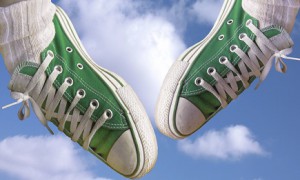Physical Therapy for Bone Spurs
 A bone spur (osteophyte) is a bony growth formed on normal bone, as the body tries to repair itself by building extra bone. It generally forms in response to pressure, rubbing, or stress that continues over a long period of time. Most people think of something sharp when they think of a “spur,” but a bone spur is just extra bone. It’s usually smooth, but it can cause wear and tear or pain if it presses or rubs on other bones or soft tissues such as ligaments, tendons, or nerves in the body. Common places for bone spurs include the spine, shoulders, hands, hips, knees, and feet.
A bone spur (osteophyte) is a bony growth formed on normal bone, as the body tries to repair itself by building extra bone. It generally forms in response to pressure, rubbing, or stress that continues over a long period of time. Most people think of something sharp when they think of a “spur,” but a bone spur is just extra bone. It’s usually smooth, but it can cause wear and tear or pain if it presses or rubs on other bones or soft tissues such as ligaments, tendons, or nerves in the body. Common places for bone spurs include the spine, shoulders, hands, hips, knees, and feet.
Some bone spurs form as part of the aging process. As we age, the slippery tissue called cartilage that covers the ends of the bones within joints breaks down and eventually wears away (osteoarthritis). Also, the discs that provide cushioning between the bones of the spine may break down with age. Over time, this leads to pain and swelling and, in some cases, bone spurs forming along the edges of the joint. Bone spurs due to aging are especially common in the joints of the spine and feet.
Bone spurs also form in the feet in response to tight ligaments, to activities such as dancing and running that put stress on the feet, and to pressure from being overweight or from poorly fitting shoes. For example, the long ligament on the bottom of the foot (plantar fascia) can become stressed or tight and pull on the heel, causing the ligament to become inflamed (plantar fasciitis). As the bone tries to mend itself, a bone spur can form on the bottom of the heel (known as a “heel spur”). Pressure at the back of the heel from frequently wearing shoes that are too tight can cause a bone spur on the back of the heel. This is sometimes called a “pump bump,” because it is often seen in women who wear high heels.
Signs and Symptoms
Many people have bone spurs without ever knowing it, because most bone spurs cause no symptoms. But if the bone spurs are pressing on other bones or tissues or are causing a muscle or tendon to rub, they can break that tissue down over time, causing swelling, pain, and tearing. Bone spurs in the foot can also cause corns and calluses when tissue builds up to provide added padding over the bone spur.
Treatment Options
Bone spurs do not require treatment unless they are causing pain or damaging other tissues. When needed, treatment may be directed at the causes, the symptoms, or the bone spurs themselves.
Treatment directed at the cause of bone spurs may include weight loss to take some pressure off the joints (especially when osteoarthritis or plantar fasciitis is the cause) and stretching the affected area, such as the heel cord and bottom of the foot. Seeing a physical therapist for ultrasound or deep tissue massage may be helpful for plantar fasciitis or heel spurs.
Treatment directed at symptoms could include rest, ice, stretching, nonsteroidal anti-inflammatory drugs, changing footwear or adding an orthotic, or a corticosteroid injection at the painful area to decrease pain and inflammation of the soft tissues next to the bone spur.
Sometimes the bone spurs themselves are treated. Bone spurs can be surgically removed or treated as part of a surgery to repair or replace a joint when osteoarthritis has caused considerable damage and deformity. Examples might include repair of a bunion or heel spur in the foot or removal of small spurs underneath the point of the shoulder.
+ Learn more about Foot & Ankle Therapy for the treatment of Heel Spur Syndrome.
